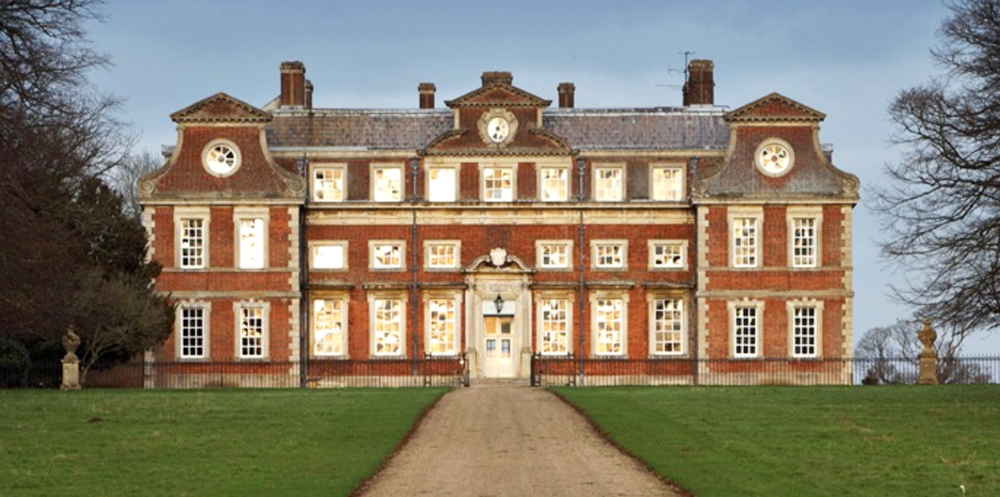Raynham Hall
Raynham Hall
100 years ahead of its time, work was started on Raynham Hall in 1619 by Sir Roger Townshend. An untrained, gentleman architect who was inspired by the work of Inigo Jones, the plans and siting were highly accomplished.
Sir Roger and his master mason, William Edge travelled to the Low Countries and extensively at home, bringing back to Norfolk some of the latest architectural innovations. Particularly striking are the neo-classical influences seen in the Ionic columns and the great Venetian window on the east front. The elegant Dutch style gables on the west front are a reminder that Raynham is closer to Amsterdam than to Bristol.
The extensive park of over 800 acres was laid out by his son Horatio Townshend, 1st Viscount, upon whose death it was said that Raynham Hall was “the noblest pyle among us”.
Raynham Hall underwent significant change in the early 18th Century under the direction of the 2nd Viscount who engaged the designer William Kent. The classical design for the Marble Hall and the furniture date from around 1724 as does the cantilevered stone staircase, with walls hand-painted in situ by Kent; the same overall design scheme was re-used by Kent a few years later for King George I’s grand staircase at Kensington Palace.
“In all England there are few more beautiful houses than Raynham – and none perhaps, that so perfectly exemplifies all that is best in English domestic architecture in the first half of the seventeenth century. Raynham is not palatial, there’s a comfortable, homely feeling about it; it is a house designed not only to be admired, but also to be loved.”
John Julius, Viscount Norwich.
Fit for A King
Horatio Townshend, 1st Viscount, was honoured by a Royal visit to Raynham Hall in 1671 following the Restoration of the Monarchy.
Several splendid chairs were commissioned for the visit of King Charles II and they remain in the magnificent Belisarius Room, used as the Royal Dining Room.
A further set were commissioned for family use and cleverly accommodated sixty-nine years later in William Kent’s scheme for ‘Lord Townshend’s Eating Room’. They are now used in the elegantly panelled State Dining Room.
The King left a very personal gift at Raynham: a pendant pair of portraits of his younger sisters, Princesses Elizabeth and Henrietta, which are on view in the newly restored Music Room.
The Noblest Pyle
The Marble Hall
With its bold black and white, chequerboard marble floor and soaring double height ceiling, the Marble Hall (pictured) is a striking space. Flooded with light from the west facing windows, the hall has been home to the Raynham Recitals which took place between April and November.
The Red Saloon
A grand fire place and overmantel are the central features of the Red Saloon. A former family chapel, the room was converted by William Kent to be a principal reception room. Ancestral Townshend portraits now dominate this room with a display of C18th Townshend/Harrison armorial china, significant Kent pier tables and a beautiful suite of French style late C18th chairs.



